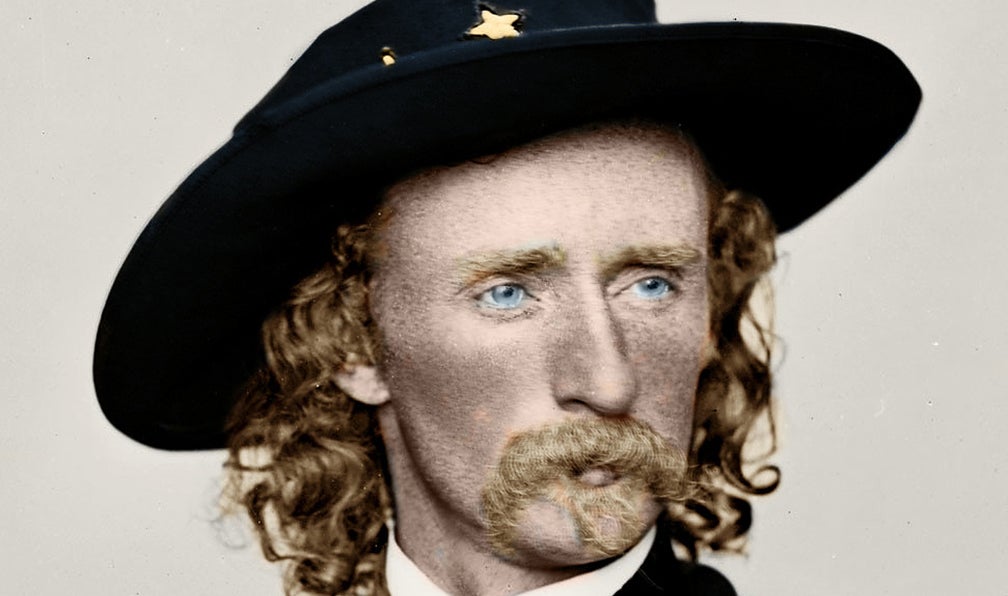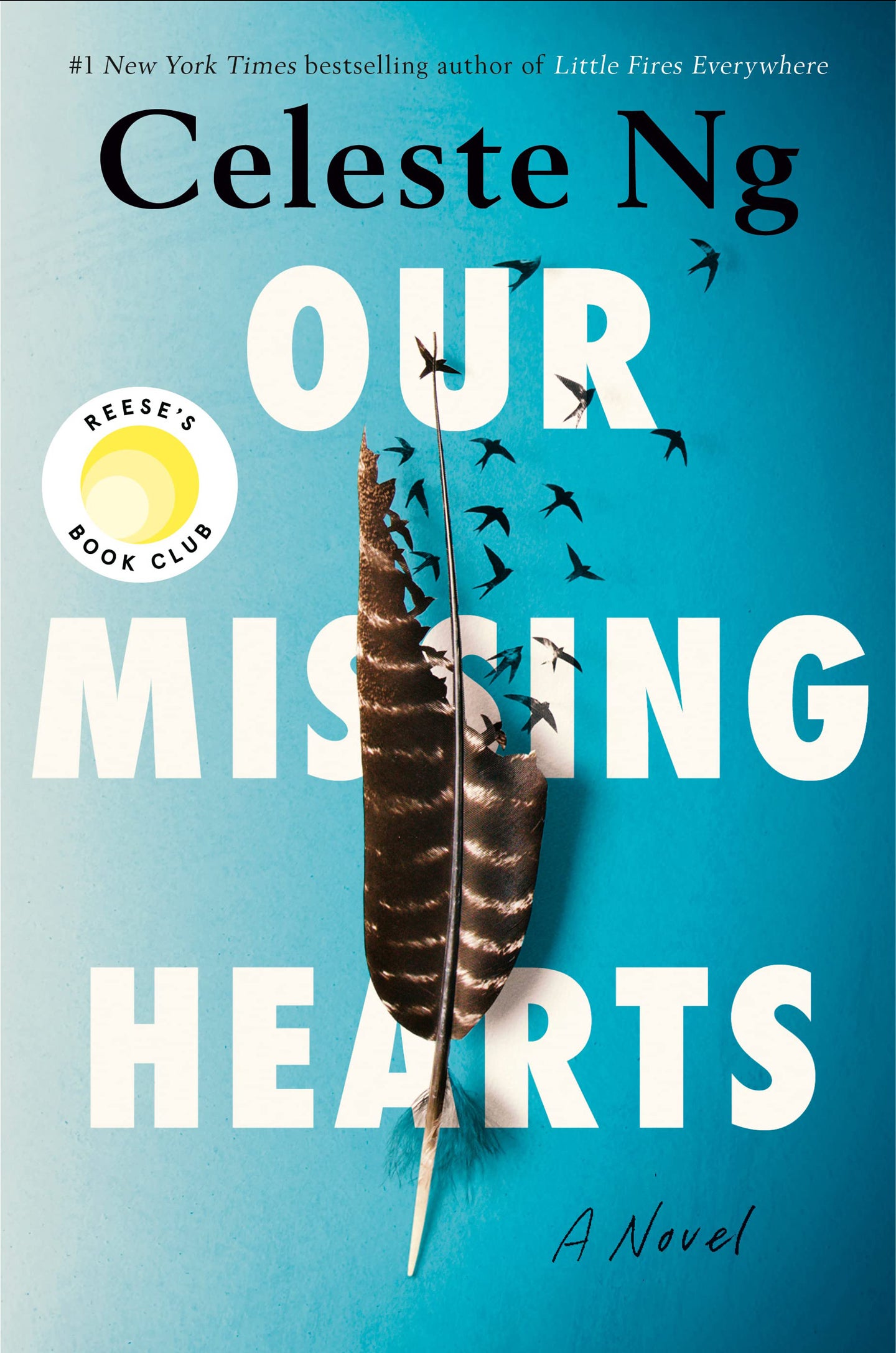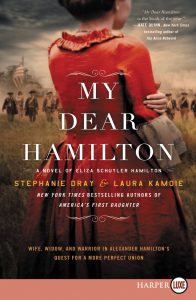
“My Dear Hamilton: A Novel of Eliza Schuyler Hamilton”
By Stephanie Dray and Laura Kamoie
Very little documentation exists about the life of Eliza Schuyler. However, many of her acquaintances of the times write about her in their correspondence. Stephanie Dray and Laura Kamoie used these sources to create a believable character in the fictional telling of Eliza and Alexander Hamilton. Dray states, “thankfully, fiction can go where historians rightly fear to tread.”
Eliza Schuyler was unlike other women of her time. Coming of age on the edge of the frontier of western New York, Eliza was her father’s daughter. He was a well-respected general in Washington’s army, and she traveled with him gaining skills as an interpreter of tribal languages.
Eliza Schuyler’s friends and acquaintances helped shape Washington’s mission to gain independence from King George of England, and create a new federal government. She met with Commander Washington as he struggled with maintaining order between his officers of the Continental army and the underfed, ill-housed troops. She was acquainted with James Monroe, Thomas Jefferson, James Madison and even Benedict Arnold and Aaron Burr, as well as their wives.
On the trip with Washington, Eliza met his favorite aid-de-camp, Alexander Hamilton, and was impressed with his intelligence and passion for the new nation. Hamilton was trying to overcome his family’s poverty and bring about a new stable government.
But the success of the Hamilton’s marriage was just as uncertain as the creation of the new nation. How could Eliza understand that the man she wed struggled with his own insecurities while trying to rise to the expectations of his new wife, and new fatherland. From the luxury of plantation comforts to the bloody battles on the streets of New York, Eliza andHamilton experienced the birth of their children and their new government.
Finally, the duel with Burr destroys Eliza’s marriage and leaves her with the major task of establishing Hamilton’s many roles with the new government. Eliza said, “They murdered my husband … they could kill him, but they couldn’t silence him … and I resolved to collect the pieces of the legacy Alexander left behind.”
If you had been attentive in your American History studies or have seen the Broadway production of “Hamilton” you are aware of his numerous contributions in persuading the Colonists to support the fundamental principles of a new nation. Hamilton was as influential as any of the Founding Fathers. But Eliza was also a “Founding Mother” to the cause of freedom. She collaborated with Hamilton in his writing of the Federalist Papers as well as Washington’s Farewell Address, which is still frequently quoted in Congressional Halls today. Eliza championed the education of native Americans, as well as freed and orphaned slave children.
Fifty years after the Revolution, Lafayette returned from France to view the results of his war-time contributions. He asked Eliza to accompany him to the Oneida Indian School, and the orphanage Eliza managed for the 50 years of her widowhood. Though Lafayette was pleased, he stated that there was still more work that was necessary to accomplish Hamilton’s vision. That can still be said today.
— Review by Lizz Taylor, Poor Richard’s Books
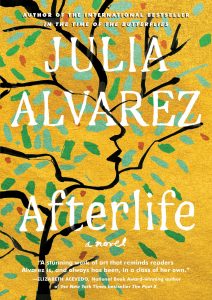
“Afterlife: A Novel”
By Julia Alvarez
Sometimes, Kentucky can be a leader and innovator. It happened here in 1975 when the Kentucky Arts Commission contracted a Latina poet, Julia Alvarez, as a writer-in-residence. This New York born writer lived in Frankfort while traveling throughout our state visiting elementary schools, high schools, colleges and communities, conducting writing workshops and giving readings. She attributes that time with providing her a deeper understanding of her adopted America and helping her realize her passion for teaching.
Born in 1950, Alvarez’s family returned to their native Dominican Republic when she was 3 months old. She spent the next 10 years there until her family was forced to flee after aiding a failed coup attempt of the government. For Julia, the loss was significant — her extended family, homeland and a language. She wrote about a similar fictional family in “How the Garcia Girls Lost Their Accent.”
After Alvarez’s Kentucky stay, she moved to Vermont and was a professor with the University of Vermont teaching English and writing classes to American students for the next 40 years.
Alvarez’s latest work is titled “Afterlife: A Novel.” This is her first work of fiction in 15 years. Her main character, Antonia, has just retired from teaching writing. Her husband suffers a brain aneurism and dies on the way to the retirement celebration. Antonia is dealing with her grief while attempting to practice her husband’s passion for immigrant justice. Antonia knows “a part of of you dies with them, but wait a while, and they return, bringing you back with them.”
Grief is not all that haunts Antonia. Her sister, the big-hearted “doer” in the family is suddenly missing. And the girlfriend of the Mexican farm worker shows up pregnant.
Alvarez’s characters seem to ask how do broken people continue to live and honor the souls they have lost. And, how in this political moment can the human family keep faith with one another?
— Review by Lizz Taylor, Poor Richard’s Books
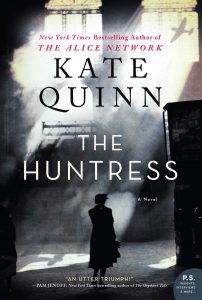
“The Huntress”
By Kate Quinn
Named one of the best books of 2019 by Marie Claire and BookBub
Nina Markova is a member of the Night Witches, an infamous regiment of Russian female bomber pilots during World War II. When she is shot down over German lines, she crosses the path of a Nazi murderess named The Huntress and barely escapes alive. After the war, Nina meets former British war correspondent Ian Graham, whose brother was murdered by The Huntress, and they join forces to track her down.
Meanwhile, 17-year-old Jordan McBride, an aspiring photographer, is thrilled when her lonely father brings home a new fiancée. Annaliese is soft-spoken and caring, but clearly, she is hiding something, and Jordan is growing more suspicious.
If you enjoy historical fiction, or are an occasional reader of this genre, we recommend this one. It is a long book, but a fun, upbeat story that delves into an interesting and little known piece of history.
— Review by the Paul Sawyier Public Library
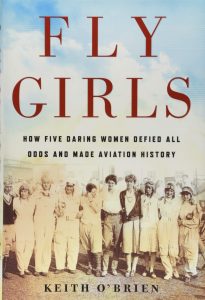
“Fly Girls: How Five Daring Women Defied All Odds and Made Aviation History”
By Keith O’Brien
Named one of New York Times Top 100 Notable Books of 2018
During the 1920s and 30s, airplane racing was one of the most popular and deadly sport competitions. It was a man’s sport, and the women wanted in. The idea that they might compete against or even defeat a man was considered ridiculous. When women kept pushing to be included, they were given their own race called the “Powder Puff Derby.”
Refusing to give in, female pilots pushed until, in 1936, they were finally allowed entrance into the most grueling race of all — and won. Researching museum records, newspaper accounts, memoirs and personal letters, O’Brien has written a courageous history of five women who pushed for their passion.
Most of us know Amelia Earhart, but the others were no less passionate and courageous — Louise McPhetridge Thaden, Ruth Nichols, Ruth Elder and Florence Klingensmith, who perished early in life in a plane crash.
This is a great inspirational read even though, occasionally, the book is bogged down with technical detail. If you enjoy reading books full of heroic adventures and tragedy, this one will not disappoint you.
— Review by the Paul Sawyier Public Library


